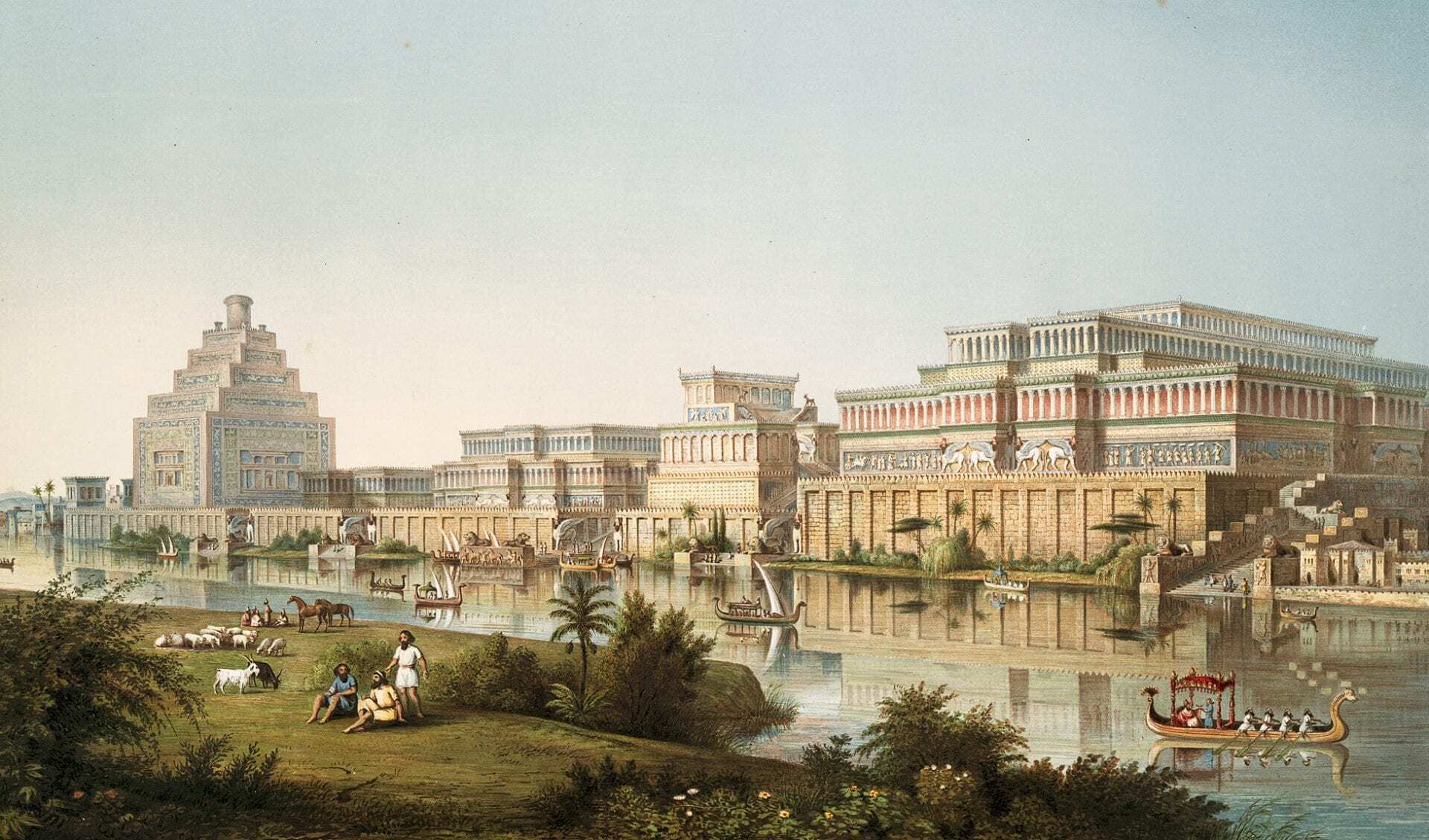Nineveh is an ancient Assyrian city, located on the east bank of the Tigris River near the present-day city of Mosul in northern Iraq.
The Assyrian Empire existed from as early as the 25th century BC, and is divided into the Early Assyrian Period (2500–2025 BC), the Old Assyrian Empire (2025–1378 BC), the Middle Assyrian Empire (1392–934 BC) and the Neo-Assyrian Empire (911–609 BC).
Archaeological evidence suggests that the region around Nineveh was first inhabited by the Hassuna culture, the first farmers in northernmost Mesopotamia who lived in small villages or hamlets during the late Neolithic period around 6000 BC.
By the Ninevite 5 period (identified by the distinct pottery), an early provincial town or city emerged that grew into an important religious site during the Old Assyrian period, in dedication to the goddess Ishtar (an ancient Mesopotamian goddess associated with love, beauty, sex, war, justice and political power).
It was during the reign of the Neo-Assyrian kings that Nineveh saw the greatest architectural expansion, transforming the city into a metropolis with streets, squares, and a series of palaces decorated with ornate reliefs.
One such Neo-Assyrian king, Sennacherib (the second king of the Sargonid dynasty) transferred the capital of Assyria to Nineveh and built the great city walls, numerous temples, and a great royal garden with associated irrigation works that some scholars suggest was the actual Hanging Gardens of Babylon.
Nineveh continued to thrive until the death of its last great king Ashurbanipal around 631 BC. The Neo-Assyrian empire entered a period of decline due to civil wars over claimants to the throne, and attacks by former vassal Kingdoms that included the Babylonians, Chaldeans, Medes, Persians, Scythians and Cimmerians.
By 612 BC, the city was placed under siege and sacked, resulting in the population either being massacred or deported, and the Assyrian empire finally collapsing in 609 BC.
The city changed hands between several rulers over the next 1000 years, from the Achaemenid Empire, the Seleucid Empire, the Parthian Empire, and the Sasanian Empire, until eventually being conquered by the Arabs in AD 641.
Over the following centuries, Niveneh was reduced to a neglected suburb and was left to ruin by the end of the 13th century AD. In 2015 – ISIL destroyed the Nineveh Mashki gate, Adad Gates and sections of the city walls.
Header Image – The Monuments of Nineveh by Sir Austen Henry Layard, 1853 – Public Domain





